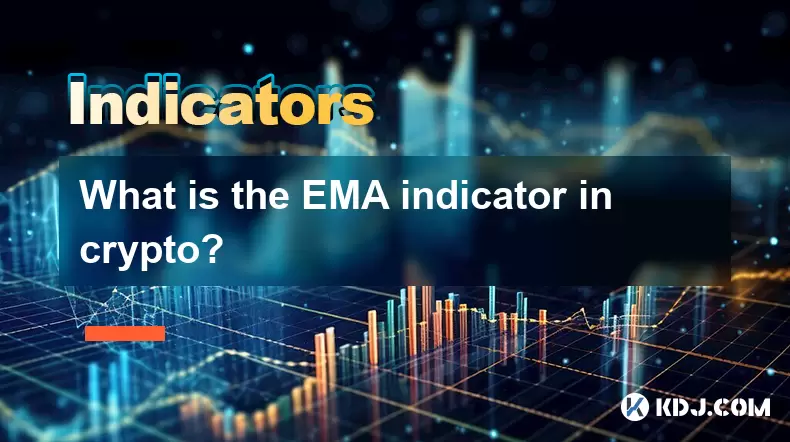-
 Bitcoin
Bitcoin $118,209.3536
1.16% -
 Ethereum
Ethereum $3,151.7546
5.98% -
 XRP
XRP $2.9277
2.35% -
 Tether USDt
Tether USDt $1.0000
0.00% -
 BNB
BNB $689.7099
1.26% -
 Solana
Solana $163.4270
1.91% -
 USDC
USDC $1.0000
0.02% -
 Dogecoin
Dogecoin $0.1983
3.74% -
 TRON
TRON $0.3008
0.51% -
 Cardano
Cardano $0.7435
2.86% -
 Hyperliquid
Hyperliquid $47.6547
-0.48% -
 Stellar
Stellar $0.4625
2.79% -
 Sui
Sui $3.9921
2.71% -
 Chainlink
Chainlink $16.0608
4.23% -
 Hedera
Hedera $0.2348
1.56% -
 Bitcoin Cash
Bitcoin Cash $496.6985
1.25% -
 Avalanche
Avalanche $21.9038
5.41% -
 UNUS SED LEO
UNUS SED LEO $8.8356
-1.88% -
 Shiba Inu
Shiba Inu $0.0...01364
5.31% -
 Toncoin
Toncoin $3.1102
4.35% -
 Litecoin
Litecoin $95.9756
3.59% -
 Polkadot
Polkadot $4.0925
5.78% -
 Monero
Monero $333.7622
-1.44% -
 Uniswap
Uniswap $9.1968
2.25% -
 Bitget Token
Bitget Token $4.6378
6.23% -
 Pepe
Pepe $0.0...01282
6.77% -
 Dai
Dai $1.0002
0.03% -
 Ethena USDe
Ethena USDe $1.0005
0.00% -
 Aave
Aave $329.9143
4.49% -
 Bittensor
Bittensor $441.4995
6.89%
What is the EMA indicator in crypto?
The EMA indicator helps crypto traders identify trends and reversals by emphasizing recent price data, making it ideal for fast-moving markets.
Jul 16, 2025 at 05:42 am

Understanding the EMA Indicator in Cryptocurrency Trading
The Exponential Moving Average (EMA) is one of the most widely used technical indicators in cryptocurrency trading. Unlike simple moving averages, which assign equal weight to all data points within a specified period, the EMA gives more weight to recent price data, making it more responsive to new information. This responsiveness makes the EMA indicator particularly useful in fast-moving crypto markets, where prices can change dramatically in short periods.
EMA helps traders identify trends and potential reversal points by smoothing out price volatility.
How Does the EMA Indicator Work?
The EMA calculates the average price over a specific time frame, but with a multiplier that emphasizes the most recent prices. For example, a 20-day EMA will give higher importance to the last few days' prices compared to older ones. The formula involves calculating the weighting multiplier and then applying it to each day’s closing price to derive the EMA value.
Here’s how you calculate a 10-day EMA:
- Determine the Simple Moving Average (SMA) for the first EMA value.
- Calculate the weighting multiplier using the formula:
$$ \text{Multiplier} = \frac{2}{\text{Time Period} + 1} $$
- Use the following formula to compute subsequent EMA values:
$$\text{EMA} = (\text{Current Price} \times \text{Multiplier}) + (\text{Previous EMA} \times (1 - \text{Multiplier}))
$$
This calculation ensures that newer data has a greater impact on the EMA line, allowing traders to react faster to changing market conditions.
Using EMA to Identify Trends in Crypto Markets
One of the primary uses of the EMA in crypto trading is trend identification. Traders often use multiple EMAs simultaneously to spot shifts in momentum. A common strategy is to compare two EMAs — such as the 9-day and 21-day EMA — to determine whether the market is bullish or bearish.
- When the shorter EMA crosses above the longer EMA, it signals a potential uptrend.
- Conversely, when the shorter EMA crosses below the longer EMA, it may indicate a downtrend.
These crossovers are known as "golden cross" (bullish) and "death cross" (bearish) in broader financial markets and are equally applicable in crypto.
Traders also use single EMAs like the 50-day or 200-day EMA to gauge long-term support and resistance levels.
How to Apply EMA in Your Trading Strategy
Incorporating EMA into your trading strategy requires careful planning and backtesting. Here’s how you can do it step-by-step:
- Select a reliable trading platform that supports EMA, such as TradingView, Binance, or Coinbase Pro.
- Choose the timeframe that aligns with your trading goals — intraday, daily, or weekly.
- Add the EMA indicator from the chart tools section.
- Customize the EMA settings based on your strategy — many traders use combinations like 9 and 21, or 50 and 200.
- Observe how price interacts with the EMA lines — this can help identify potential buy or sell zones.
Some traders combine EMA with other indicators like RSI or MACD to filter false signals and improve accuracy.
Common EMA Strategies Used in Crypto Trading
There are several popular EMA-based strategies used by crypto traders:
- Dual EMA Crossover: Involves using two EMAs — one short-term and one medium-term. Buy when the shorter EMA crosses above the longer one; sell when it crosses below.
- Triple EMA Strategy: Uses three EMAs — typically 9, 21, and 50 — to confirm trend strength before entering a trade.
- EMA Pullback Strategy: Looks for price retracements to key EMA levels (like the 21 EMA) during a strong trend as entry opportunities.
Each strategy has its own risk-reward profile and should be tested thoroughly before live trading.
Risk management remains crucial even when using well-established EMA strategies.
FAQ: Frequently Asked Questions About EMA in Crypto
Q1: Can EMA be used for day trading cryptocurrencies?
Yes, EMA is highly effective for day trading, especially when combined with volume indicators and candlestick patterns. Shorter timeframes like 5-minute or 15-minute charts often use EMAs like 9 and 21 for quick decision-making.
Q2: Is EMA better than SMA for crypto trading?
While both have their merits, EMA reacts faster to price changes, making it more suitable for volatile crypto markets. However, SMA can provide clearer long-term trend signals due to its slower nature.
Q3: What are the best EMA settings for Bitcoin or Ethereum?
Many traders prefer 9, 21, and 50 EMAs for BTC and ETH. These settings balance responsiveness and reliability across different market conditions. However, optimal settings may vary depending on your trading style and timeframe.
Q4: How do I avoid fakeouts when using EMA?
To reduce false signals, consider combining EMA with other filters like volume spikes, support/resistance levels, or additional oscillators like RSI or Stochastic. Also, avoid trading during low-volume hours when markets are more prone to manipulation.
Disclaimer:info@kdj.com
The information provided is not trading advice. kdj.com does not assume any responsibility for any investments made based on the information provided in this article. Cryptocurrencies are highly volatile and it is highly recommended that you invest with caution after thorough research!
If you believe that the content used on this website infringes your copyright, please contact us immediately (info@kdj.com) and we will delete it promptly.
- XRP Price: Higher Lows Hint at Potential Trend Shift?
- 2025-07-16 15:10:12
- Bitcoin, Crypto Casinos, and Bonuses: A New Yorker's Guide to Hitting the Jackpot
- 2025-07-16 15:15:12
- Bitcoin, Deutsche Bank, and Mainstream Adoption: A New Era?
- 2025-07-16 14:30:13
- Bitcoin's ETF Demand & Institutional Momentum: A NYC Perspective
- 2025-07-16 14:50:12
- Bitcoin's Bullish Run: Demand Surges, Correction Unlikely?
- 2025-07-16 12:30:12
- JPMorgan, Blockchain, and Stablecoins: A Wall Street Revolution?
- 2025-07-16 14:50:12
Related knowledge

Advanced RSI strategies for crypto
Jul 13,2025 at 11:01am
Understanding the Basics of RSI in Cryptocurrency TradingThe Relative Strength Index (RSI) is a momentum oscillator used to measure the speed and chan...

Crypto RSI for day trading
Jul 12,2025 at 11:14am
Understanding RSI in the Context of Cryptocurrency TradingThe Relative Strength Index (RSI) is a momentum oscillator used to measure the speed and cha...

Crypto RSI for scalping
Jul 12,2025 at 11:00pm
Understanding RSI in the Context of Crypto TradingThe Relative Strength Index (RSI) is a momentum oscillator widely used by traders to measure the spe...

What does an RSI of 30 mean in crypto
Jul 15,2025 at 07:07pm
Understanding RSI in Cryptocurrency TradingRelative Strength Index (RSI) is a momentum oscillator widely used in cryptocurrency trading to measure the...

What does an RSI of 70 mean in crypto
Jul 13,2025 at 06:07pm
Understanding the RSI Indicator in Cryptocurrency TradingThe Relative Strength Index (RSI) is a widely used technical analysis tool that helps traders...

Does RSI work in a bear market for crypto
Jul 16,2025 at 01:36pm
Understanding RSI in Cryptocurrency TradingThe Relative Strength Index (RSI) is a momentum oscillator used by traders to measure the speed and change ...

Advanced RSI strategies for crypto
Jul 13,2025 at 11:01am
Understanding the Basics of RSI in Cryptocurrency TradingThe Relative Strength Index (RSI) is a momentum oscillator used to measure the speed and chan...

Crypto RSI for day trading
Jul 12,2025 at 11:14am
Understanding RSI in the Context of Cryptocurrency TradingThe Relative Strength Index (RSI) is a momentum oscillator used to measure the speed and cha...

Crypto RSI for scalping
Jul 12,2025 at 11:00pm
Understanding RSI in the Context of Crypto TradingThe Relative Strength Index (RSI) is a momentum oscillator widely used by traders to measure the spe...

What does an RSI of 30 mean in crypto
Jul 15,2025 at 07:07pm
Understanding RSI in Cryptocurrency TradingRelative Strength Index (RSI) is a momentum oscillator widely used in cryptocurrency trading to measure the...

What does an RSI of 70 mean in crypto
Jul 13,2025 at 06:07pm
Understanding the RSI Indicator in Cryptocurrency TradingThe Relative Strength Index (RSI) is a widely used technical analysis tool that helps traders...

Does RSI work in a bear market for crypto
Jul 16,2025 at 01:36pm
Understanding RSI in Cryptocurrency TradingThe Relative Strength Index (RSI) is a momentum oscillator used by traders to measure the speed and change ...
See all articles

























































































